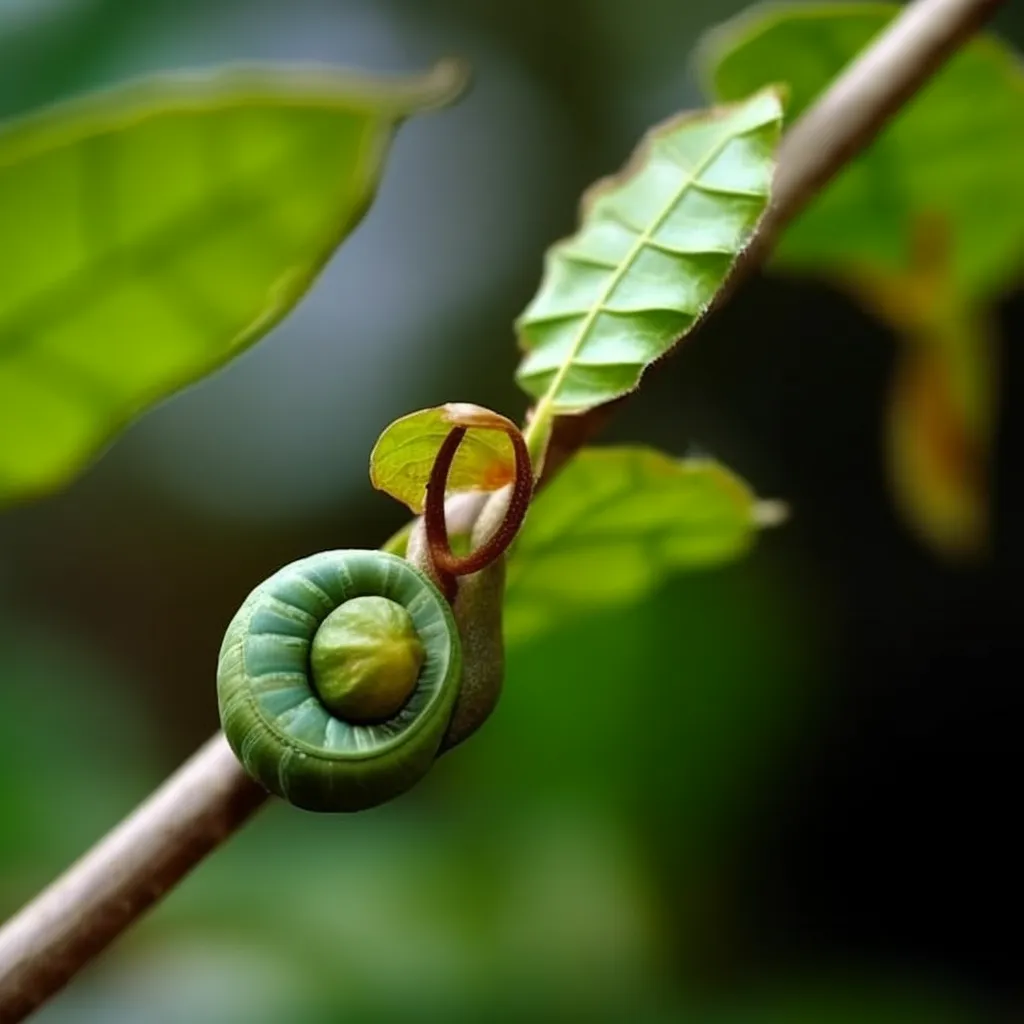Story of Day :
Contents
The Snail Vine Plant: A Complete Guide and Care Tips
Are you looking for a unique and eye-catching plant to add to your garden? Look no further than the snail vine plant! Also known as the corkscrew vine, this tropical beauty is sure to turn heads with its twisted, spiral-shaped flowers.
But before you rush out to buy one, read on for a complete guide on how to care for this intriguing plant.
About the Snail Vine Plant
The snail vine (Vigna caracalla) is a member of the Fabaceae family, which includes other well-known plants like beans and peas.
Native to South America, this fast-growing perennial can reach heights of up to 20 feet if grown in ideal conditions.
Appearance
The most notable feature of the snail vine plant is its unique flowers.
The blooms start out small but quickly grow into long spirals resembling snails or seashells.
The flowers come in shades of pink, purple, and white and have a sweet fragrance that attracts pollinators like bees and butterflies.
Cultivation
Snail vines prefer warm temperatures (around 70-80°F) with full sun exposure or partial shade.
They require well-draining soil with plenty of organic matter added in.
If planting from seed or cutting, be patient as it can take several weeks for growth to appear above ground level.

- Planting: When transplanting your snail vine outside from potting soil make sure you keep them moist until they have established themselves outdoors.
- Fertilizing: You’ll want fertilize every two weeks during their growing season using an all-purpose fertilizer diluted at half strength.
- Watering: Water regularly, but be careful not to overwater.
Allow the soil to dry out slightly between waterings to prevent root rot.
Pests and Diseases
The snail vine is relatively pest-resistant and disease-free if given proper care.
However, like most plants, it can fall prey to certain issues if neglected or exposed to unfavorable conditions.
- Capsid bug: These garden pests attack the plant’s stems and flowers, causing them to wilt or die off.
Keep an eye out for distorted growth as a sign of infestation.
- Scales: Scales are small insects that feed on the plant’s sap and excrete a sticky substance called honeydew which can attract ants.
They look like tiny bumps along the stem or leaves of your plant – be sure inspect often!
- Mildew: Powdery mildew appears as white spots on leaves and petals caused by fungal spores in humid conditions – make sure you give your snail vine plenty of air circulation so they don’t sit wet for too long after watering!
Uses in Landscaping
The snail vine isn’t just a showstopper in gardens with its unique blooms; it also has practical uses when grown with other plants! Since it is a climbing vine, you can trellis it near other taller plants such as trees or shrubs for colorful vertical interest.
Mix them with tropicals such as Hibiscus syriacus (Rose Mallow) for an exotic look in your yard space.

In Conclusion
If you’re looking for something truly unique to add to your garden, the snail vine plant is sure to turn heads with its spiral-shaped blooms.
With proper care and maintenance, this tropical beauty can thrive in your outdoor space and provide a fragrant and colorful addition that you’ll love for years to come.